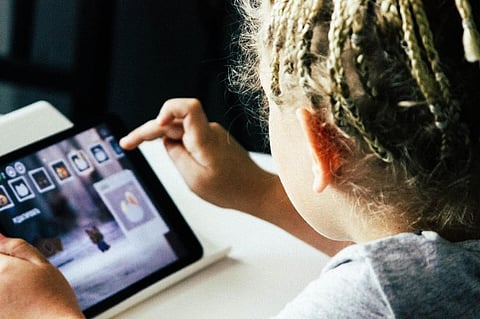
- Home
- न्यूजग्राम
- NewsGram USA
- India
- World
- Politics
- Entertainment
- Culture
- Lifestyle
- Economy
- Sports
- Sp. Coverage
- Misc.
- NewsGram Exclusive
- Jobs / Internships

According to studies by UNESCO, students with disabilities are the least to benefit from distance learning solutions. As the Coronavirus pandemic disrupted 2020 and possibly even beyond, educational institutions across the globe have been forced to adjust with the change in normalcy and implement a modern, socially-distant, learning module – virtual learning. As distance learning becomes the safest option for students, they are more prone to adverse effects associated with the pandemic.
Follow NewsGram on LinkedIn to know what's happening around the world.
Based on research published by the University of South Wales in 2020, individuals with intellectual or developmental disabilities are particularly vulnerable to adverse risks associated with COVID-19. Even though social distant learning is the safest solution during the global pandemic, it is not necessarily the most advantageous. According to health researchers at CPFN, disabilities can range from learning deficits, physical disabilities, or those with developmental delays. One concerned parent asked, "how do you teach someone to hold a pencil over the internet?" as her 7-year-old daughter has a genetic disorder that affects her motor skills, self-control, and attention span. These are just one of the many difficulties that parents have to shoulder to ensure their children are not left behind in distant learning.
According to health researchers at CPFN, disabilities can range from learning deficits, physical disabilities, or those with developmental delays. Unsplash
According to a recent statement with Global Action on Disability, UNESCO provided key principles to ensure the right of education of learners with disabilities are met. These principles include considerations to all learners as it is now more apparent that educational needs and support are just as important as attending classes on campus. Besides their primary healthcare needs, the pandemic has limited the access of those with disabilities to third party educational centers that tutor or guide them in their school activities.
With professional help now unable to meet their client primarily due to local restrictions or personal concern, the task of assisting the student with a disability now falls upon the inexperienced family member. Parents and relatives also have to schedule their careers in an unorthodox manner to meet the educational needs of their children. As this may be the new normal, it might not always lead to favorable results.
Online learning has its advantages as a socially distant learning experience. However, special factors need to be considered as to how students will react once they are back to a classroom in a school setting. According to Selene Almazan, legal director for the Council of Parent Attorneys and Advocates, USA, "Schools and parents will need to determine exactly what has been lost and what can be regained during the course of a school year."
As students will be accustomed to being in the comfort of their own home, how will they react once they return to a social setting with their peers? Answers may vary, but one thing is certain, the new changes will result in more challenges. This is especially true for those with social difficulties pre-COVID and without their routine in special education.
(Disclaimer: The article is sponsored, and hence promotes some commercial links.)
